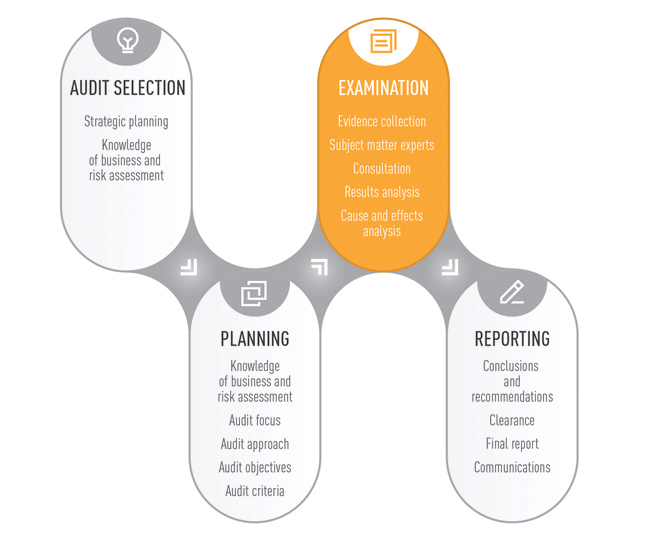Examination or Main Study

In any performance or value-for-money audit, a challenge for the audit team is to plan and conduct audit procedures that are robust enough to allow auditors to determine whether audit criteria are met, to obtain sufficient appropriate evidence, and to conclude on the audit objective(s).
While audits of gender equality will include evidence collection and analysis techniques common to all performance audits, the selection of audit procedures will also require some special considerations. For example, the audit team may need to be familiar with a variety of data collection and analysis techniques, such as gender-based analysis, benchmarking, surveys, statistical analysis, and root cause analysis.
In an audit of gender equality that emphasizes systems and controls, the audit procedures may involve tests of controls, process mapping, document reviews, physical observation, and interviews. Auditors may also need to compare an audited organization's processes to achieve gender equality with best practices to determine if there are weaknesses. For example, if the organization has implemented gender equity programs, the auditor should compare the organization’s version of gender equity programs with best practices for gender equity implementation.
In an audit of gender equality that emphasizes results, the auditor will need to conduct audit procedures that focus on measuring gender equality and on assessing the reliability and completeness of gender equality-related information and benchmarks.
When examining results and outcomes, auditors should consider the “attribution” question: is there a reasonable causal relationship between an organization's actions and the observed changes in gender equality? Identifying this reasonable causal relationship can be especially challenging for outcomes, because public sector organizations are often working toward longer-term outcomes where various external factors may affect the final achievement of desired results. In such instances, audited organizations may have only a contributory effect on the outcomes being sought. Subject matter experts may be able to help auditors deal with the attribution question.
However, these contributory effects can be significant and the challenge of attribution will not necessarily prevent auditors from concluding on the gender equality of the audited organization or program. In situations where the auditee’s influence over achievement of desired results has remained relatively stable over the examination period, auditors may also be able to assess levels of gender equality over time.


